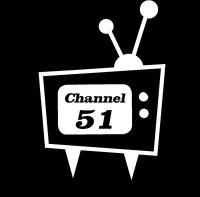FCC Seeks Comments on Broadcaster Relinquishment of Ch. 51

WASHINGTON: Federal regulators are seeking feedback on a petition from the wireless industry to kick broadcasters off of Channel 51.
TVB reported last week that the CTIA--The Wireless Association and the Rural Cellular Association, filed a petition with the Federal Communications Commission asking for an immediate license freeze on Ch. 51. They also want the FCC to clear the channel as soon as possible of broadcasters who “reach voluntary agreements to relocate to an alternate channel,” according to the FCC’s related Public Notice.
CTIA members recently met with the FCC’s Jim Schlichting, senior deputy chief of the Wireless Burueau, and Margaret Weiner, chief of the Auctions and Spectrum Access division of the Wireless Bureau.
“During this meeting, CTIA and member companies discussed the importance of bringing additional spectrum to market for mobile broadband services,” the FCC ex parte filing documenting the meeting states.
Ch. 51 is the highest channel on the broadcast TV spectrum, at 698 MHz. It came to define that boundary after broadcasters gave up Chs. 51-69 in the digital transition. The spectrum between those channels was auctioned off to wireless providers in blocks. Ch. 51 now lies adjacent to the A Block, which comprises 176 wireless licenses from 698 to 704 MHz, and from 728 to 734 MHz. CTIA members Verizon, U.S. Cellular and Cavalier, and several other companies, won licenses in the A Block.
The petitioners cited the Obama Administration’s goal of creating nationwide wireless broadband as justification for booting broadcasters from Ch. 51. The Obama FCC’s National Broadband Plan already proposes taking 120 MHz of broadcast spectrum and reallocating it for wireless services. This is in addition to the 108 MHz relinquished after June 2009, when over-the-air analog TV signals were shut down.
“The National Broadband Plan emphasized the deployment of additional spectrum for wireless broadband spectrum as key policy objective of the commission,” the CTIA and RCA petition states. “While the 700 MHz spectrum in particular is ideally suited for innovative wireless broadband services, licensees in the A Block face technical challenges caused by the presence of broadcast TV services on Ch. 51.”
Under current FCC rules broadcasters are legally protected from harmful interference caused by the A Block winners.
Comments are due on the Ch. 51 petition, (Proceeding No. RM-11626 in the FCC Comment Filing System)--April 27. Reply comments are due May 12, 2011.
-- Deborah McAdams
Get the TV Tech Newsletter
The professional video industry's #1 source for news, trends and product and tech information. Sign up below.
